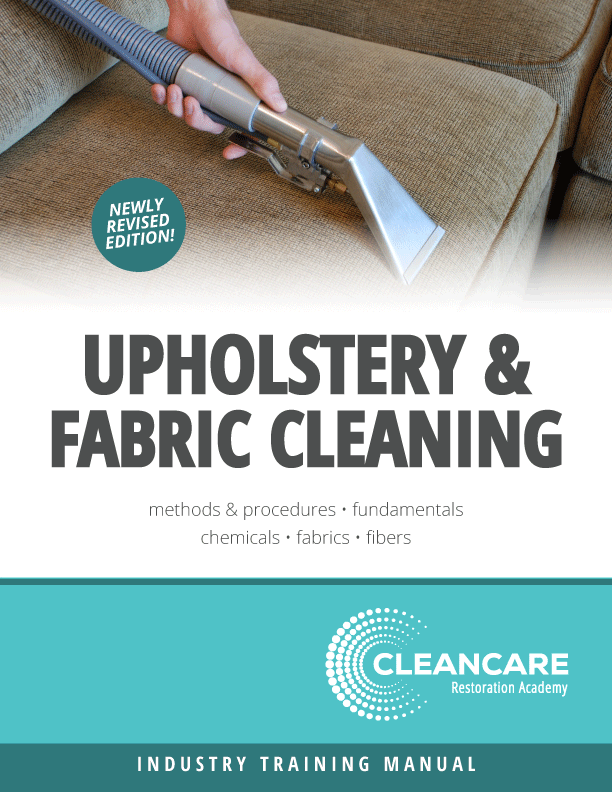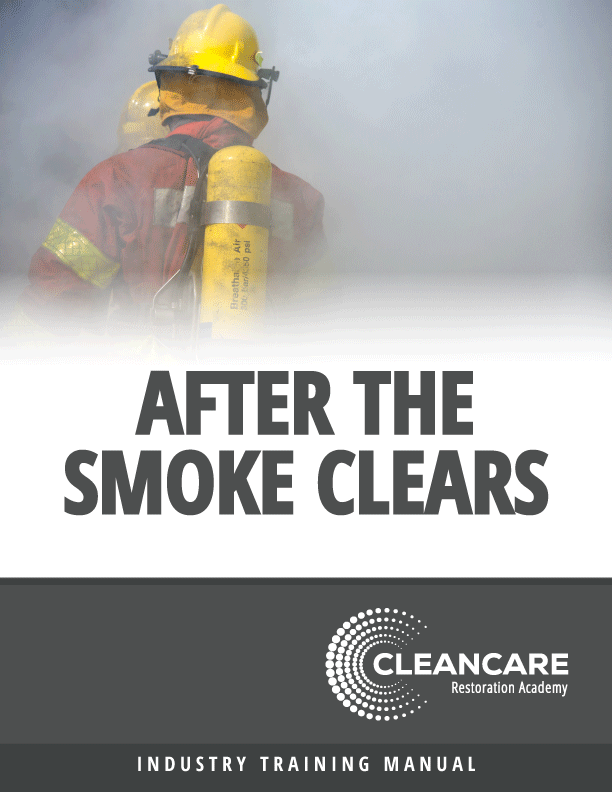The Intentional Restorer
Preventing Explosive Office Drama
You arrive at the office. Something stinks.
The odor is fresh. It’s pervasive.
You check the restroom, did the sewer back up?
No. The bathroom is in order. As you exist the restroom, you notice that your employees, like a pack of lemurs, are all peeking over their cubicles with wide eyes and anticipation. You begin to take in the scene with a broader scope. You realize that it has happened - the drama that has been building in the office has finally exploded.
Tension has been so thick that it has affected all of the senses. You could swear that you could smell the foul stench of unresolved conflict wafting through the office for some time now. Tension has been building like a Pacific Northwest volcano warning of its impending belch of doom. But you all just went about your business. You didn’t actually think it would come to this.
Some refer to this as the mess hitting the fan. You know that you can’t act like it was a surprise. Everyone on your team saw it coming. As a person in a position of leadership you thought the issues would resolve themselves. Conversely, your team thought that because you are a manager that you would know what to do and would prevent things from getting this far.
Where do you start when the mess has hit the fan?
- Step 1: Make sure no more mess is headed towards the fan.
- Step 2: Unplug the fan.
- Step 3: Get some gloves, a respirator with an odor filter and lots of paper towels.
- Step 4: Start the process of finding and cleaning the mess
That’s it, right? Clean up the aftermath and go about your business as usual. If this were a Category 3 water damage, a biohazard response or cleaning fecal matter, you would know exactly what to do. That is work that you are familiar with. Yet, personal messes and the collateral damage of tensions boiling over are much more complex.
Your hear no evil, see no evil approach has brought you to this point. What do they say about insanity, it’s doing the same thing and expecting different results? To be a successful leader you need to intentionally develop the skills to help your team positively navigate conflicts. You must invest in the skills that will help you prevent these emotionally draining clean ups from being necessary. Avoidance is not a successful strategy.
Your efforts to prevent messes from hitting the fan reveal the strength of your culture.
Some effort = Infrequent incidents
If you have put some effort into developing your culture than messes may not hit the fan all that often. You probably have signs on the walls with beautiful background pictures that say, “Your mess matters here.” Like most, you think a conflict reaching the point that it hits the fan is anomaly and you don’t spend that much time in preventing it. Your plan is to be reactive.
Poor effort = Frequent incidents
If your culture is deteriorating there may still be fresh mess hardening on the walls from the last bout. Rather than mildly inspirational signs, your poster says, “This is a mess free environment,” and there is a chart counting the days since your last messy incident. A memo was emailed to all staff reminding them that throwing their mess at company fans on company time is a violation of the employee handbook.
No effort = It’s happening again, isn’t it?
If you think culture is a joke, you may have thrown in the towel and accepted that messes hitting fans is par for the course. You think you are a good manager but you just need a better staff in order to be successful. You signed up for leadership for the marginal raise and a better parking spot, you can’t understand why these adults can’t get their act together.
I am ready to be proactive in building a stronger culture, where do I start?
You would replace Step 3 from above with some sleuthing. Cue the music for Law & Order: MIFIU (Mess In Fan Investigation Unit):
- Document the scene
- Look for clues as to who may have assisted the poop in reaching the fan
- Send samples of the fecal matter to the lab
- Interview (or interrogate) potential witnesses
- Draw things out so you get at least a good hours worth of content
- Present your findings in a compelling and damning fashion
- Lambast the perpetrator and show you mean business with the swiftness of your justice
- And, end scene.
A good investigation, like good leadership, starts with listening.
When someone is acting out it is because they feel that conventional methods of communication are not effective. It could also mean that they need some professional help dealing with anger. Leaders must find means to understand and support their team members. Don’t be distracted by symptoms of the issue, get to the root causes and begin a process of prevention.
When developing a team that understands and responds to the vision, you must measure success by your ability to row together rather than against each other. Managers must develop the skills that enable them to:
- Listen to your team.
- Identify issues and discuss solutions.
- Implement positive tools for dealing with conflict.
- Adjust your process.
Stop allowing yourself to repeat the cycle of reacting to issues.
Listening is a great place to start. While you may be tempted to interrogate your team and weed out the culprit so that you can punish them, explosive office drama is a symptom of the broader issue. Punishing the one offender will not fix your issues. Get some clarity on why team members feel like messy outbursts are their only recourse.
Start the process of change by discussing your issues as a team.
To gain progress on the issues holding you back from executing on your vision you have to first identify them. If your team hasn’t met in a while to discuss issues that affect the team as well as individuals, now would be a good time to start. The cost of inaction is adding up. You want your team to speak openly about issues so that they can take ownership in the solutions.
Work together to build a proactive culture.
As a manager you don’t enjoy cleaning up messes but when you refuse to dig into the real issues that plague your team you will have to react when unresolved conflicts burst. If you prefer to know just enough about emotional intelligence to “inspire” your people to acquiesce you will struggle to succeed in the modern market. Start the hard work of intentionally developing a culture that deals with conflict before it becomes a much messier problem.
Additional resources:
- Article - Tiers of Support in the Workplace
- Video - Learning from Behavior Support
- Article - Intentionally developing people skills
On Mon, Nov 25, 2019 at 8:29 PM Jon Isaacson <iz.vents@gmail.com> wrote:
Michelle,
Is this a good fit for R&R?
When the poop hits the fan at the office.
You know how to clean poop up for customers, do you know how to flush out the issues that are stopping your progress?
You arrive at the office. Something stinks.
The odor is fresh. It’s pervasive.
You check the restroom, did the sewer back up?
No. The bathroom is in order. As you exist the restroom, you notice that your employees, like a pack of lemurs, are all peeking over their cubicles with wide eyes and anticipation. You begin to take in the scene with a broader scope. You realize that there are decorations splattered upon your office walls that are out of place. As your eyes catch up with your nose, reality sets in.
Poop has hit the fan.
The office drama has finally exploded.
Toots of conflict have been wafting through the team for some time now. Tension has been building like a Pacific Northwest volcano warning of its impending doom. But you all just went about your business. You didn’t actually think it would come to this. We’re all adults, right?
You know that you can’t act like it was a surprise. Everyone on your team saw (and smelled) it coming. As a person in a position of leadership you thought the issues would resolve themselves. Conversely, your team thought that because you are a manager that you would know what to do and would prevent it from getting this far.
Where do you start when the poop has hit the fan?
- Step 1: Make sure no more poop is headed towards the fan.
- Step 2: Unplug the fan.
- Step 3: Get some gloves, a respirator with an odor filter and lots of paper towels.
- Step 4: Start the process of finding and cleaning the crap (work you are familiar with).
Sidenote: To the degree that you do not want to find future surprises, you will want to be thorough with the fourth step.
That’s it, right? Clean up the aftermath. You know how to do that, you are a property restoration leader specializing in responding to Category 3 water damage and much worse. Then go about your business as usual.
Please, no. This hear no evil, see no evil approach has brought you to this point. Repeating the same process will lead to the same terrible scenario happening again. Even though as a disaster restoration contractors you are good at cleaning up poop, it’s not something you should be consistently doing within our organization. You should be investing in the skills that will help you prevent these clean ups that follow unaddressed issues exploding within our team.
Your efforts to prevent poop from hitting the fan reveals something about your culture.
Some effort = Infrequent incidents
If you have put some effort into developing your culture than poop may not hit the fan all that often. You probably have signs on the walls with beautiful background pictures that say, “Your poop matters here.” Like most, you think poop hitting the fan is anomaly and don’t spend that much time in preventing it. Your plan is to deal with it, to be reactive.
Poor effort = Frequent incidents
If your culture is deteriorating there may still be fresh poop fragments hardening on the walls from the last bout. Rather than mildly inspirational signs, your poster says, “This is a poop free environment,” and there is a chart counting the days since your last poop based incident. A memo was emailed to all staff reminding them that throwing poop at company fans on company time is a violation of the employee handbook.
No effort = It’s happening again, isn’t it?
If you think culture is a joke, you probably like the smell of poop.
What if you wanted to prevent future poop from hitting the fan?
You would replace Step 3 from above with some sleuthing. Cue the music for Law & Order: PFIU (Poop Flinger’s Investigation Unit):
- Document the scene
- Look for clues as to who may have assisted the poop in reaching the fan
- Send samples of the fecal matter to the lab
- Interview (or interrogate) potential witnesses
- Draw things out so you get at least a good hours worth of content
- Present your findings in a compelling and damning fashion
- Lambast the perpetrator and show you mean business with the swiftness of your justice
- And, end scene.
If you don’t want your investigation to poop out…
When someone is acting out it is because they feel that conventional methods of communication are not effective. It could also mean that they need some professional help dealing with anger. Leaders must find means to understand and support their team members. Don’t be distracted by symptoms of the issue, get to the root causes and begin a process of prevention.
When developing a team that understands and responds to the vision, you must measure success in by your ability to row together rather than against each other. Managers must develop the skills that enable them to:
- Listen to your team
- Identify issues and discuss solutions
- Implement positive tools for dealing with conflict
- Adjust your process
If you want to move away from cleaning up poop, where do you start?
Listening is a great place to start. While you may be tempted to interrogate your team and weed out the culprit so that you can punish them, the poop flinger is a symptom of the broader issue. Punishing the one offender will not fix your poop issues. Get some clarity on why team members feel like throwing poop is their only recourse.
The poop exists, how often do you discuss it?
To gain progress on the issues holding you back from executing on your vision you have to first identify them. If your team hasn’t met in a while to discuss issues that affect the team as well as individuals, now would be a good time to start. The cost of inaction is adding up. You want your team to speak openly about issues so that they can take ownership in the solutions.
Poop belongs in the toilet, it does not belong in the fan or on the office walls.
If you had literal poop on your office walls it would be hard to ignore. The unsanitary conditions would lead to rampant sickness. In many ways poop on the walls is a much simpler issue than most interpersonal conflicts. We incorrectly believe that conflict should be avoided when good conflict is sign of a robust culture.
You cannot pretend the poop isn’t there.
Managers would rather clean up poop that dig into the real issues that plague their teams. If you prefer to know just enough about emotional intelligence to “inspire” your people to acquiesce you will struggle to succeed in the modern market. Start the hard work of intentionally developing a culture with less poop internally, less poop in fans and less poop on the walls.
Additional resources:
- Article - Tiers of Support in the Workplace
- Video - Learning from Behavior Support
- Article - Intentionally developing people skills
Looking for a reprint of this article?
From high-res PDFs to custom plaques, order your copy today!








